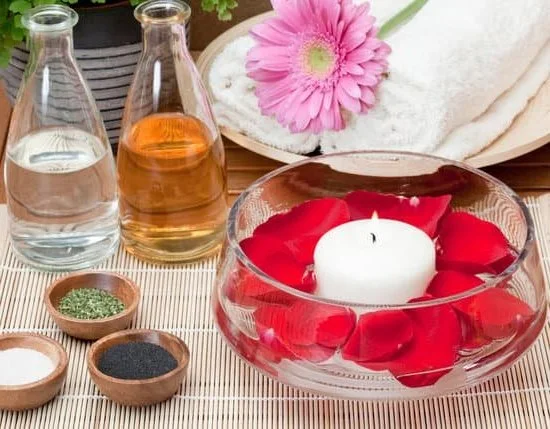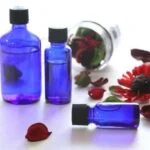Aromatherapy has been used for centuries as a natural way to promote overall well-being and treat a variety of ailments. When it comes to skincare, aromatherapy can also offer a range of benefits, from soothing the skin to promoting relaxation. In this article, we will explore the world of aromatherapy and its specific advantages for the skin, as well as how to harness these benefits by creating your own aromatherapy body lotion at home.
Aromatherapy uses essential oils extracted from plants to promote physical and psychological well-being. These potent oils can be utilized in various ways, including in skincare products like body lotions. By understanding the basics of aromatherapy and its benefits for the skin, you can create a customized body lotion tailored to your specific needs and preferences.
When it comes to crafting an effective and luxurious aromatherapy body lotion, it’s important to have a good grasp of the fundamentals of body lotion making. This includes selecting the right carrier oils, understanding the properties of essential oils, and knowing how to properly preserve your homemade product.
In addition, we will delve into the step-by-step process of making your own aromatherapeutic body lotion at home, allowing you to experience all the benefits that these natural ingredients have to offer for your skin.
Understanding the Basics of Body Lotion Making
Aromatherapy body lotions are a great way to nourish and pamper your skin while enjoying the therapeutic benefits of essential oils. Making your own aromatherapy body lotion at home is not only fun and rewarding, but it also allows you to customize the ingredients to suit your skin’s needs and scent preferences.
If you’re new to making body lotions, it’s important to understand the basic ingredients and their roles in the formulation. Here’s a simple overview of the key components of a homemade body lotion:
1. Water-based phase: This phase includes water, hydrosols, or aloe vera gel. It provides hydration and helps create a smooth consistency for the lotion.
2. Oil-based phase: This phase consists of carrier oils such as coconut oil, sweet almond oil, or jojoba oil. These oils add moisture and nourishment to the skin.
3. Emulsifiers: Emulsifiers are necessary to bind the water and oil phases together, preventing them from separating.
Now that you have an understanding of the basic components of body lotions, it’s time to learn how to make aromatherapy body lotion using essential oils for their therapeutic properties.
To start making your own aromatherapy body lotion at home, follow these steps:
– Gather all the necessary ingredients and equipment.
– Measure out the water-based phase and heat it up in one container.
– In another container, measure out the oil-based phase and heat it up as well.
– Add an emulsifier to the oil-based phase and mix thoroughly.
– Slowly pour the water-based phase into the oil-based phase while stirring constantly.
– Once fully combined, allow the mixture to cool down before adding your chosen essential oils for scent and therapeutic benefits.
– Transfer the lotion into sterilized containers for storage.
By following this step-by-step guide on how to make aromatherapy body lotion, you can create a luxurious product that not only pampers your skin but also uplifts your senses with delightful aromas.
Essential Oils and Their Aromatherapeutic Properties for Body Lotions
Aromatherapy body lotion is a wonderful way to enjoy the benefits of essential oils while also nourishing and hydrating your skin. Essential oils are the key ingredient in aromatherapy body lotions, and each oil offers unique aromatherapeutic properties that can benefit both the mind and body. Here are some essential oils commonly used in aromatherapy body lotions and their properties:
- Lavender: Known for its calming and relaxing properties, lavender essential oil is often used in body lotions to promote a sense of peace and reduce stress.
- Peppermint: With its invigorating and cooling effects, peppermint essential oil can stimulate the senses, ease muscle tension, and provide a refreshing sensation on the skin.
- Chamomile: This gentle essential oil has soothing and anti-inflammatory properties, making it ideal for sensitive or irritated skin. It can also help promote relaxation and improve sleep quality.
In addition to these oils, there are many other essential oils with their own unique benefits that can be incorporated into aromatherapy body lotions. When making your own lotion at home, it’s important to choose essential oils that not only smell pleasing to you but also offer the therapeutic effects you desire.
Another important factor to consider when using essential oils in body lotions is their concentration. It’s crucial to use them in safe amounts as they are highly potent. Always refer to a reliable dilution guide or seek advice from a qualified aromatherapist to ensure that you are using them safely and effectively.
Lastly, proper storage is vital for maintaining the potency of essential oils in homemade body lotions. Store your finished product in a cool, dark place away from direct sunlight to prevent oxidation and degradation of the oils’ therapeutic properties.
Choosing the Right Carrier Oils for Aromatherapy Body Lotions
When it comes to making aromatherapy body lotions, choosing the right carrier oils is essential. Carrier oils are used as a base for diluting essential oils before applying them to the skin, and they also provide nourishment and hydration to the skin. Different carrier oils offer different benefits, so it’s important to select the ones that will best complement your chosen essential oils and meet your skincare needs.
Consideration of Skin Type and Concerns
Before selecting carrier oils for your aromatherapy body lotion, consider your skin type and any specific skin concerns you may have. For example, if you have dry skin, you may want to opt for heavier, more moisturizing carrier oils such as avocado oil or sweet almond oil. On the other hand, if you have oily or acne-prone skin, lighter carrier oils like jojoba oil or grapeseed oil may be more suitable.
Matching Carrier Oils With Essential Oils
It’s also important to take into account the scent and therapeutic properties of the essential oils you plan to use in your body lotion when choosing carrier oils. For instance, if you’re using lavender essential oil for its calming effects, pairing it with a neutral-scented carrier oil like fractionated coconut oil can help highlight its aroma.
Additionally, some carrier oils have their own beneficial properties that can complement those of specific essential oils. Doing thorough research on both carrier and essential oils will help ensure that you make a well-informed decision.
Quality and Purity of Carrier Oils
Lastly, always prioritize high-quality, pure carrier oils for your aromatherapy body lotions. Look for cold-pressed or expeller-pressed options that have been minimally processed to retain their natural nutrients and properties.
This will not only enhance the effectiveness of your body lotion but also provide a better overall skincare experience when using it. Understanding these principles on how to make aromatherapy body lotion with the right carrier oils will ultimately lead to a successful homemade product that caters specifically to your skin’s needs.
The Importance of Emulsifiers and Preservatives in DIY Body Lotions
Emulsifiers and preservatives are crucial components in DIY body lotions, including aromatherapy body lotions. Emulsifiers are necessary to blend the water and oil portions of the lotion together, preventing them from separating. Preservatives, on the other hand, help to prevent the growth of bacteria, mold, and yeast in your homemade lotion, which can spoil the product and pose risks to your skin.
When making aromatherapy body lotions at home, it’s important to choose effective emulsifiers and preservatives that will ensure the stability and safety of your product. Some popular natural emulsifiers include beeswax, lecithin, and cetyl alcohol. As for preservatives, options such as vitamin E oil, grapefruit seed extract, and rosemary antioxidant can be used to extend the shelf life of your lotion.
It is essential to carefully research and understand the proper usage of emulsifiers and preservatives when making aromatherapy body lotions at home. Using incorrect amounts or types of these ingredients can lead to a failed product or even potential skin irritation. Be sure to follow recommended guidelines for incorporating emulsifiers and preservatives into your DIY body lotion recipes.
| Emulsifiers | Preservatives |
|---|---|
| Beeswax | Vitamin E oil |
| Lecithin | Grapefruit Seed Extract |
| Cetyl Alcohol | Rosemary Antioxidant |
Step-by-Step Guide on How to Make Aromatherapy Body Lotion at Home
Making your own aromatherapy body lotion at home is a fun and creative way to harness the benefits of essential oils for your skin. By creating your own customized blend, you can tailor the scent and therapeutic properties to suit your preferences and needs. Here’s a step-by-step guide on how to make aromatherapy body lotion at home.
First, gather all the necessary ingredients and tools, including carrier oils (such as coconut oil or sweet almond oil), shea butter or cocoa butter, beeswax pellets, essential oils of your choice, a heat-proof mixing bowl, a double boiler or microwave, and sterilized containers for storing the finished product.
Next, combine your chosen carrier oils, shea or cocoa butter, and beeswax pellets in the heat-proof mixing bowl. Heat the mixture gently using a double boiler or microwave until everything is melted and well combined. Be careful not to overheat the mixture to preserve the beneficial properties of the ingredients.
Once the mixture has cooled slightly but is still liquid, add in your desired essential oils for their therapeutic benefits and fragrance. Stir well to ensure an even distribution of the essential oils throughout the lotion. Pour the mixture into sterilized containers and allow it to cool and solidify before using. Voila. You now have your very own homemade aromatherapy body lotion ready to use.
Tips and Tricks for Customizing and Scenting Your Aromatherapy Body Lotion
Customizing and scenting your aromatherapy body lotion can be a fun and creative process that allows you to tailor the product to your personal preferences. Adding essential oils to your homemade body lotion not only provides a beautiful fragrance but also brings additional therapeutic benefits to the skin. Here are some tips and tricks for customizing and scenting your aromatherapy body lotion:
Choosing the Right Essential Oils
When it comes to selecting essential oils for your body lotion, it’s important to consider both the scent and the properties of the oils. For example, lavender essential oil is known for its calming and soothing effects, making it a great choice for bedtime lotions, while citrus oils like lemon or orange can impart an energizing and uplifting aroma.
Creating Scent Combinations
Experiment with creating unique scent combinations by mixing different essential oils together. Some popular blends include lavender and peppermint for a refreshing yet relaxing scent, or grapefruit and vanilla for a sweet and invigorating aroma. Take note of the intensity of each oil as well as how they blend together to create a harmonious overall fragrance.
Avoiding Overpowering Scents
While it can be tempting to add a large amount of essential oil to achieve a strong fragrance, it’s important to practice restraint. Using too much essential oil can irritate the skin and overpower the senses. Start with small amounts and gradually increase until you achieve your desired scent strength.
By following these tips, you can create a personalized aromatherapy body lotion that not only nourishes your skin but also provides therapeutic benefits through carefully chosen essential oils. Experiment with different combinations and enjoy the process of customizing your own signature scents for your homemade body lotion.
Remember that essential oils are potent substances, so always perform a patch test before applying any new blend directly onto your skin.
Storage and Shelf Life of Homemade Aromatherapy Body Lotions
Making your own aromatherapy body lotion can be a fun and rewarding experience, but it’s important to consider the storage and shelf life of your homemade creation. Proper storage is crucial for maintaining the potency and effectiveness of the essential oils used in your lotion, while understanding the shelf life can help prevent the risk of using expired products on your skin.
To ensure that your homemade aromatherapy body lotion lasts as long as possible, it’s important to store it in a cool, dark place away from direct sunlight and heat. Direct sunlight and heat can cause the essential oils to degrade more quickly, reducing their effectiveness. Consider using amber or dark-colored glass containers to further protect the oils from light exposure.
The shelf life of homemade aromatherapy body lotions can vary depending on the ingredients used. As a general rule of thumb, lotions made with water-based ingredients have a shorter shelf life compared to those made with only oils and waxes.
It’s recommended to use up water-based lotions within 3-6 months, while oil-based lotions can last up to 1 year or longer if stored properly. Keeping track of when you made each batch of lotion can help you determine when it’s time to make a fresh batch.
By following these storage guidelines and being mindful of shelf life, you can enjoy the benefits of your homemade aromatherapy body lotion for longer periods of time. Making smaller batches more frequently using fresh ingredients can also ensure that you always have a supply of high-quality lotion at your disposal.
Conclusion and Final Thoughts on Aromatherapy Body Lotion Making
In conclusion, making your own aromatherapy body lotion can be a rewarding and beneficial experience. By using the power of essential oils and choosing the right carrier oils, you can create a personalized product that not only nourishes your skin but also provides various aromatherapeutic benefits. Understanding the basics of body lotion making, including the use of emulsifiers and preservatives, is crucial for ensuring the quality and shelf life of your homemade lotion.
Following a step-by-step guide on how to make aromatherapy body lotion at home is a great way to start your DIY journey. By customizing and scenting your lotion with different essential oil blends, you can cater to your specific skin needs and preferences. Whether you are looking for relaxation, rejuvenation, or simply a pleasant aroma to accompany your skincare routine, there are endless possibilities when it comes to creating your own aromatherapy body lotion.
Frequently Asked Questions
How Do You Make Aromatherapy Lotion?
Aromatherapy lotion can be made by adding essential oils to a natural unscented lotion base. Start by choosing your favorite essential oils, then decide on the desired strength and scent of the lotion. Mix the essential oils thoroughly into the lotion base, and voila – you have aromatherapy lotion!
Can You Mix Essential Oils With Body Lotion?
Yes, essential oils can be mixed with body lotion to create a customized scented product with potential aromatherapy benefits. However, it’s important to ensure that the essential oils are properly diluted to avoid skin irritation. Always do a patch test before applying any new mixture to a larger area of your body.
What Essential Oil Is Good for Body Lotion?
There are several essential oils that are good for body lotion depending on your needs. Lavender oil is great for its calming and relaxing properties, while peppermint oil can provide a refreshing and cooling sensation.
For moisturizing benefits, consider using oils such as jojoba or almond oil in your body lotion mixtures. Ultimately, the best essential oil for body lotion depends on your personal preferences and skin care needs.

Are you looking for a natural way to improve your health and wellbeing?
If so, aromatherapy may be the answer for you.






